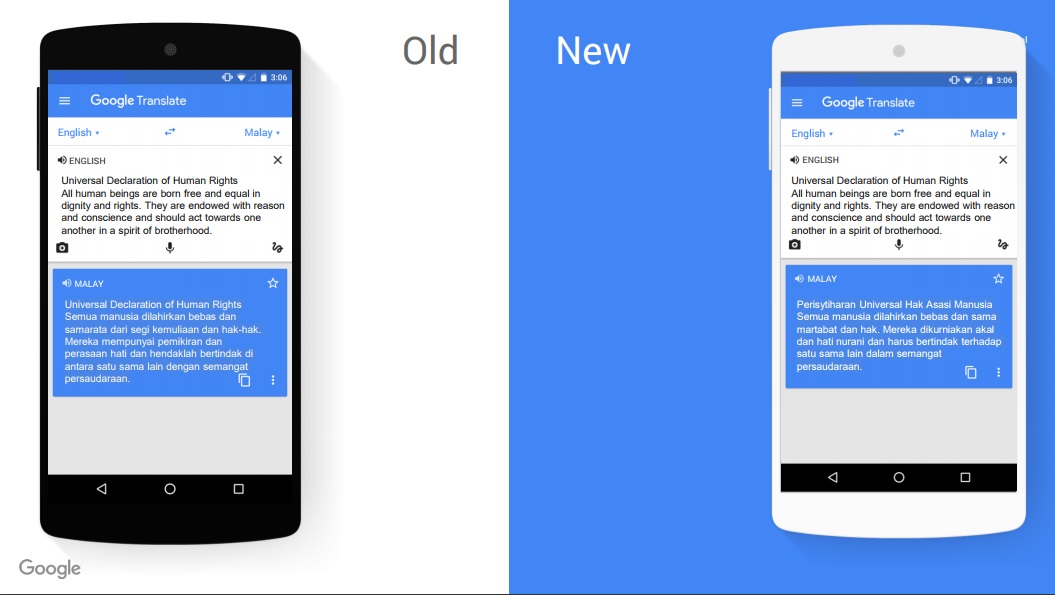Google Translate’s new neural network now supports Malay, and will display improved translations when working with the language. This is due to a redesign in how the system deals with translation, looking at the whole body of work for context instead of dealing with the task piecemeal.
The traditional method for machine translation is to break individual words down for translation; which tended to result in gibberish being displayed, or in the best case scenario a document that required some effort to decipher. Neural net computing is instead capable of looking at the task as a whole. Which allows the computer to choose the appropriate translation based on the context of the work.
To achieve this, Google had to train its Google Translate network on billions of documents. Showing it both the original language and the translated version. All in all each language model required more than 100 million documents.

Despite this, there are still some shortcomings with the system. For instance, it’s not very good with dealing with phrases with colloquialisms, idioms, and slang. It also struggles in the event that the user mixes two or more languages into a single sentence.
In this event, Google still relies on a crowdsourced solution to point the neural network in the right direction.
Using a neural network also allows the machines to better translate between languages that are not English. While this is a work in progress, Google has made accidental progress after the computers picked it up on their own from teaching models that included multiple languages. The system is not yet perfect, but the groundwork is currently being laid for improvement.
For now, Google Translate’s neural network supports 77 languages, including Mandarin Chinese, Japanese, Korean, Italian, French, and Spanish. The goal is to expand the number of languages in the future, presumably to encompass all of known human speech.


